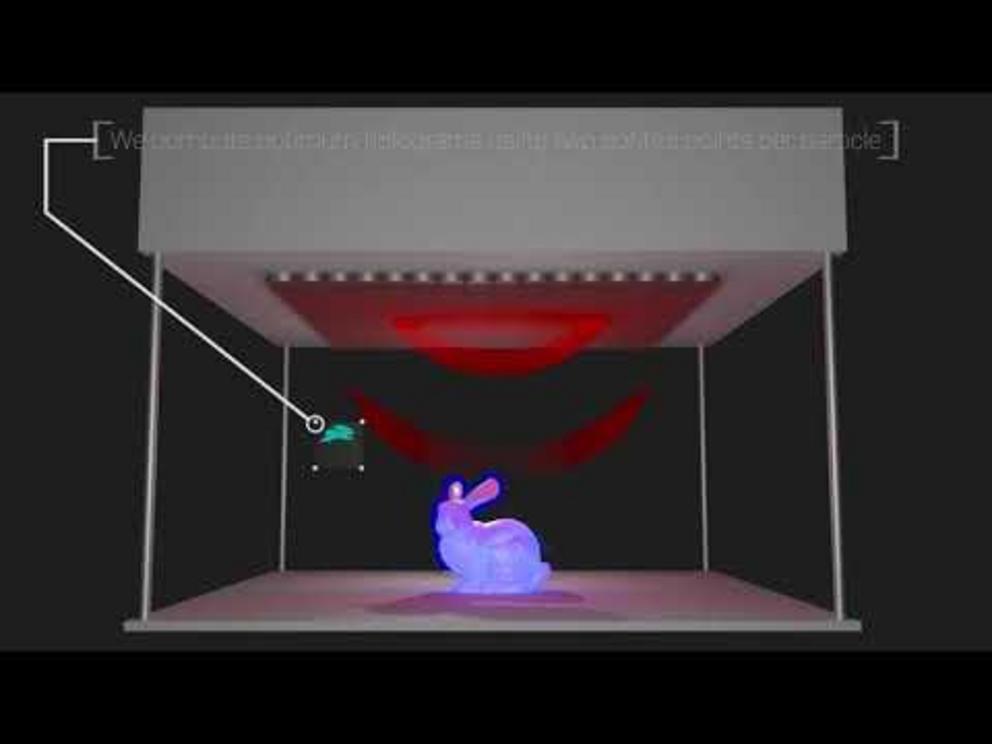Keeping objects levitated by sound airborne despite interference

Real-time acoustic holography with arbitrary scattering surfaces. (A) Schematical concept of our acoustic holographic technique that can create multiple levitation traps in the presence of sound-scattering physical objects. Pmax represents the maximum amplitude of the pressure in the sound field. (B) Experimental example of our technique that can levitate four particles with a projection screen (i.e., a piece of light fabric), demonstrating an MR display that creates digital content in the presence of a 3D-printed physical object. The high computational rates of our approach enable the digital content to be interactive to user inputs (i.e., the levitated screen moves according to the keyboard input).
A team of researchers at University College London has developed a way to keep objects levitated by sound waves airborne when other objects interfere with the levitation path. In their paper published in the journal Science Advances, the group describes their self-correcting levitation system.
Prior research has shown that it is possible to levitate objects by firing sound waves at them. Because sound waves are nothing more than air particles moving together in a certain way, the object being levitated will fall if an object interferes with the sound waves. In this new effort, the researchers developed new features to address this problem.
To protect the sound waves from interference, the researchers increased the number of speakers used—in their work, they used 256. They also added software to control each of the speakers. The speakers were arranged in a grid and objects were levitated by specifically shaped sound waves. By programming the speakers in specific ways, the team was able to get the system to work together to keep an object above the grid in the air despite interruptions. If some of the sound waves were blocked, other sound waves were redirected to take their place.
The researchers proved their system was viable by testing it using a 3D-printed white rabbit as an interference object. Objects were levitated around the rabbit regardless of its location. In one experiment, the researchers levitated beads around the rabbit that formed into a flying butterfly. They also levitated a piece of clear fabric that they used as a screen for projection of the rabbit they had printed. And they levitated a single drop of water over a glass of water, showing that their system would work even when the interfering object was a jiggling glass of liquid.
This video shows the creation of a butterfly flapping around a 3D-printed bunny, which can be controlled by hand gestures.
The researchers suggest their system could be used for demonstration purposes, such as in museums or advertisements. They next plan to expand their system to allow it to handle multiple interfering objects at the same time.
More information: Ryuji Hirayama et al, High-speed acoustic holography with arbitrary scattering objects, Science Advances (2022). DOI: 10.1126/sciadv.abn7614
Journal information: Science Advances

